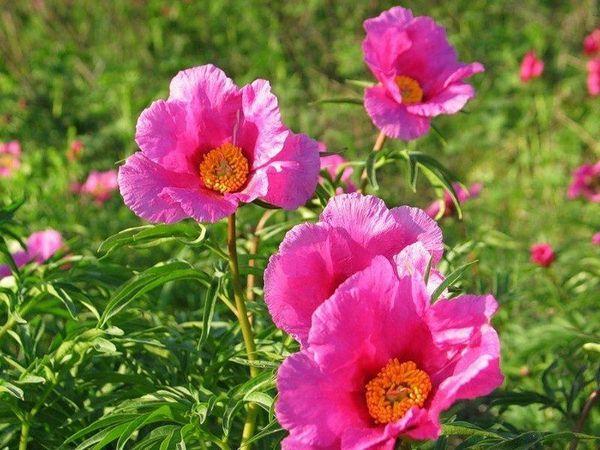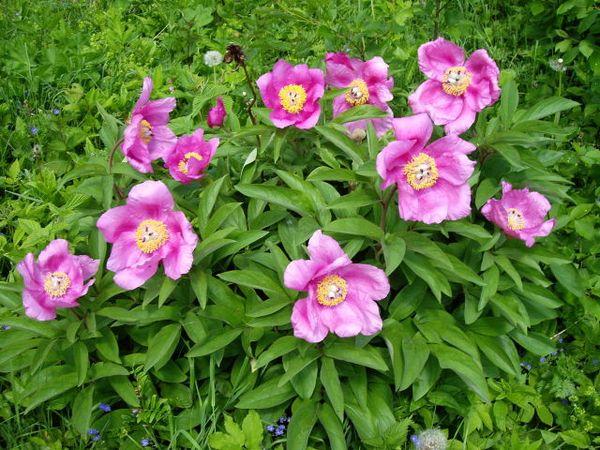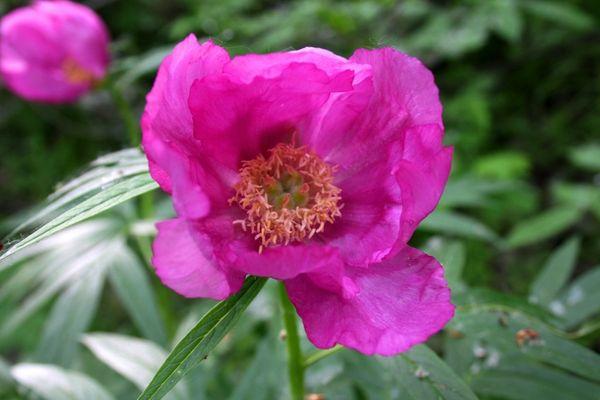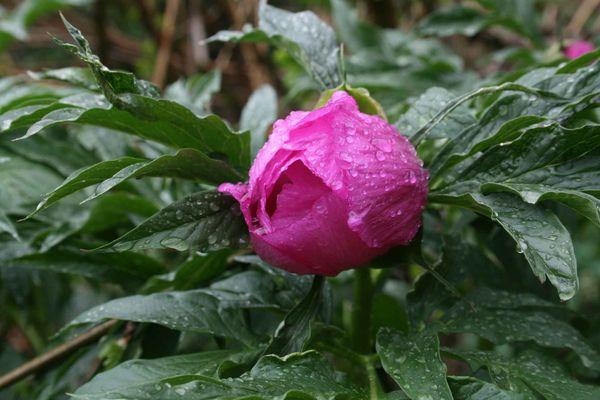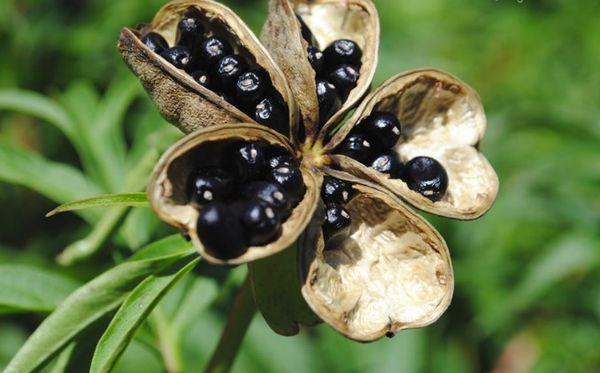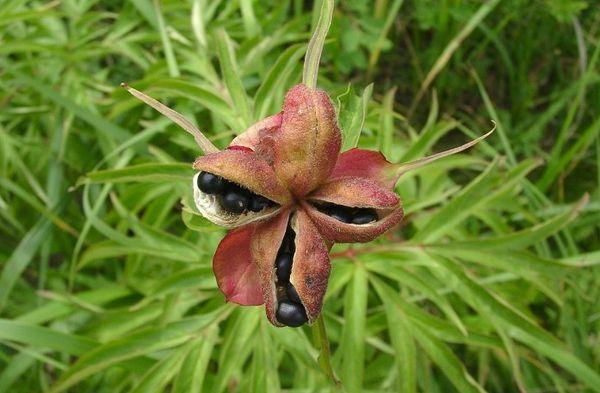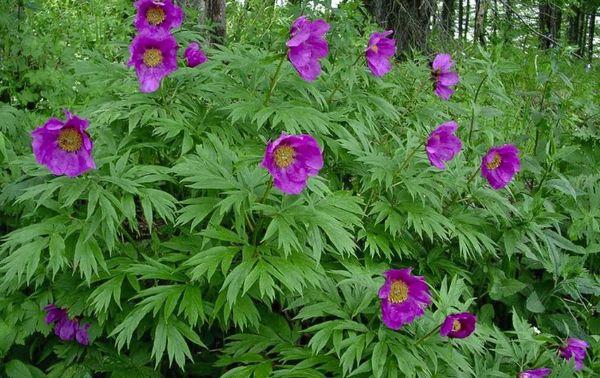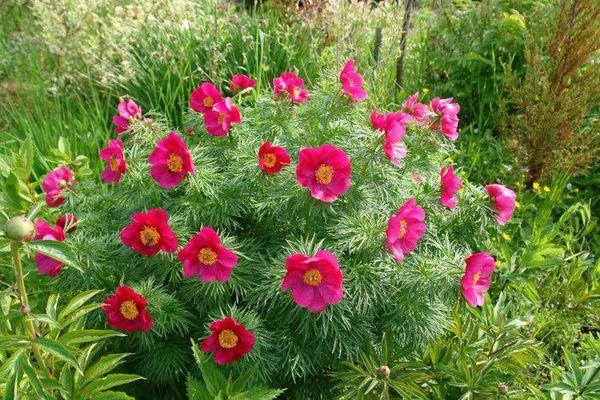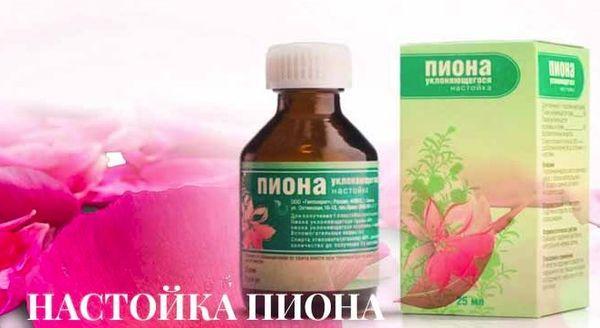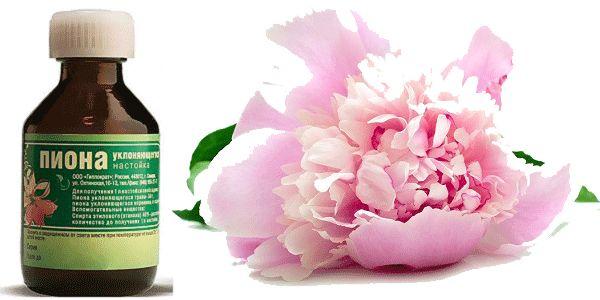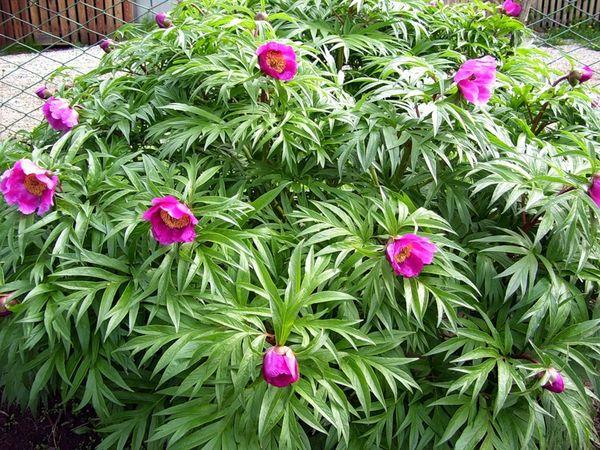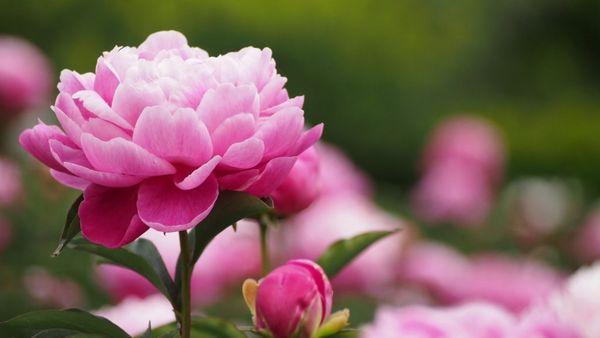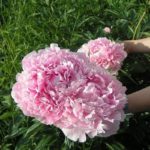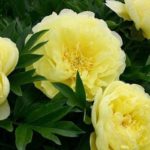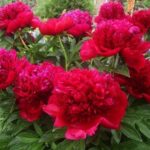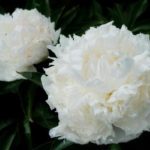Maryin root has long been known to folk healers and is used as a remedy in official medical practice. The plant is used in cooking, cosmetology, and veterinary medicine. A distinction should be made between the evasive peony, which grows in the northeastern regions of the globe, and the medicinal peony. The habitat of the latter is Western Europe. Grown as an ornamental plant.
- Description and features
- What does it look like
- Where does it grow
- Healing components
- Chemical composition
- Organic acids
- Fatty oil
- Ethers
- Iron
- Calcium
- Magnesium
- Tanning organic substances
- Vitamin C
- Medicinal properties
- Painkiller
- Anticonvulsant
- Sedative
- Antitumor
- Bactericidal
- Expectorant
- Appetizing
- Detoxification
- General strengthening
- Collection and preparation
- Careful collection
- Drying and shelf life
- Indications for medicinal use
- Nervous system
- Digestive system
- Respiratory system
- Removing excess salt from the body
- Treatment of alcoholism
- External use
- Benefits for women
- For infertility
- Menstrual irregularities
- Premenopausal period
- Diseases of the reproductive system
- Mastopathy
- Benefits for men
- From impotence
- To reduce high testosterone
- Pharmacy drugs
- Dry vegetable raw materials
- Dry extract, packaged in tablets
- Tincture
- Homemade tincture recipes
- Anti-pressure tincture
- Tincture for nerves and insomnia
- Tincture for mastopathy
- Tincture for menopause
- Contraindications
- During pregnancy
- Lactation
- Childhood
- Side effects in case of overdose
- Dizziness
- Low pressure
- Drowsiness
- Weakness
- Classification
- Use in cosmetology
Description and features
Peony evasive is a herbaceous perennial with a branched rhizome. The height of the shoots reaches 100 centimeters. Leaves are obovate. The flowers are large, solitary. It grows wild and is cultivated in gardens as an ornamental plant.
What does it look like
The ground part of the peony consists of numerous erect stems. The leaves are alternate, petiolate, separate, with lanceolate lobes. The length and width of the leaf plates is up to 30 centimeters. The root is brown, with tubers, white at the break, tastes sweet, with a strong aroma.
The flower is single, at the end of the stem, up to 10 centimeters in diameter. The calyx is made up of 5 large sepals, the number of petals in the corolla is 5-8. Color – red-pink. Peony blooms from May to June.The fruit is formed in August-September. The seeds are black, large balls.
Where does it grow
The plant has a limited growing area. Endemic to Western Siberia.
In addition to Siberia, grass can be found:
- in the northern regions of the European part of Russia;
- northern Kazakhstan;
- Mongolia;
- China.
Peony grows on humus-rich, not waterlogged soils, along river valleys, on sunny edges, meadows, and in mixed forests.
Healing components
The perennial belongs to medicinal plants; all its parts are used: roots, flowers, leaves.
Chemical composition
The use of marina root for medicinal purposes is explained by its unique chemical composition.
Organic acids
Salicylic and concentrated benzoic acids are contained in free form in peony.
Fatty oil
Fatty oil is obtained from the seeds and roots of peony.
Ethers
Essential oils are components of fatty oil of marina root.
Iron
In terms of iron content, peony root is not inferior to vegetable crops.
Calcium
The amount of macroelements in the rhizome tubers allows the herbaceous plant to be used to treat the heart muscle.
Magnesium
Like calcium, magnesium, a component of peony root, is one of the most important mineral supplements that affects heart function.
Tanning organic substances
Tannins give peony root an astringent taste.
Vitamin C
Ascorbic acid is found in the leaves and flowers of peony evasive.
Medicinal properties
The use of preparations from marina root helps stabilize the condition of all organs and systems of the body. It is used both as a single agent and as part of complex therapy.
Painkiller
The suppression of pain is influenced by chemical and organic compounds of peony. Acting in combination, they relieve inflammation, joint pain, and calm the central nervous system.
Anticonvulsant
Peony neutralizes spasms and convulsions provoked by them.
Sedative
Inhibits the passage of nerve impulses.
Antitumor
Flavonoids, tannins, and benzoic acid in peony suppress the growth of malignant cells and increase immunity.
Bactericidal
Tannins and organic acids influence pathogenic microorganisms and stop their reproduction.
Expectorant
The glycosides contained in peony dilute sputum and accelerate its discharge.
Appetizing
The presence of essential oils radically improves gastrointestinal motility and gallbladder function. Glutamine regulates the functioning of the digestive system.
Detoxification
Ascorbic acid, flavonoids, salicylic and benzoic acids remove toxins from the body.
General strengthening
Components of roots, leaves and flowers help strengthen the immune system:
- ascorbic acid;
- tannins;
- flavonoids.
The amino acids included in the composition (arginine, glutamine) affect the production of insulin and glucose synthesis. Sugars and starch provide energy.
Collection and preparation
The time to collect all parts of the peony is the month of June, when the flowers bloom. The stems and leaves are cut with a knife. The roots are dug up with a shovel.
Careful collection
Peony harvesting should be carried out while maintaining the possibility for further reproduction and growth of the plant. To do this, part of the root with stems is cut off in the ground with a shovel, without damaging the remaining part.
Drying and shelf life
Peony roots are washed with water, large parts are split.Drying is carried out in ventilated areas, in the shade, laid out in one row. Dried roots can be dried at a temperature of 30-40 degrees.
The stems and leaves are dried separately from the rhizomes in the attic, under a canopy, on metal sheets. The shelf life of harvested raw materials is 3 years.
Indications for medicinal use
The list of diseases for which preparations from evasive peony can be prescribed is very wide.
Nervous system
Infusions and decoctions from the root help with overexcitability of the nervous system, which results in the development of diseases such as:
- hysteria;
- sleep disorders;
- increased anxiety.
Medicines as part of complex therapy will soften convulsive seizures and reduce the tone in the limbs with cerebral palsy and epilepsy.
Digestive system
Peony evaders affects the functioning of the stomach and intestines:
- stimulates appetite;
- increases the production of hydrochloric acid;
- suppresses pathogenic microflora;
- smoothes out spasmodic attacks of the stomach.
Drugs based on it stop the growth of benign tumors in the gastrointestinal tract. As part of complex treatment, it is prescribed for the treatment of oncological diseases of the intestines and stomach.
Respiratory system
As an expectorant, marin root is used in chest preparations for the treatment of dry cough.
Removing excess salt from the body
To regulate salt metabolism in the body, peony evasive is added to an infusion with birch leaves, calendula flowers, and buckthorn bark.
Treatment of alcoholism
The plant is included in complex collections that are taken for a long time to overcome cravings for alcohol. The ingredients may be toxic.
External use
Alcohol and water tincture has an antiseptic, antimicrobial effect on infected skin.External treatment promotes accelerated epithelization and wound healing.
Benefits for women
Medical practice has proven the effectiveness of peony evader for diseases of the endocrine and reproductive female organs.
For infertility
Problems with conception associated with hormonal imbalance due to mental imbalance are solved by taking a course of alcohol tincture. The duration of treatment is 30 days. Break – 10 days. Then repeat the cycle for 2 months.
Menstrual irregularities
The influence of peony evaders on hormonal levels contributes to the regulation of the menstrual cycle.
Premenopausal period
Maryin root is useful during the period of extinction of the endocrine glands. Taking the medicine allows you to avoid sudden changes in hormonal levels and associated mental and nervous disorders.
Diseases of the reproductive system
Infusions of the root are used for disorders in the functioning of the internal genital organs:
- inflammation of the ovaries;
- appendages;
- fibroids;
- uterine fibroids;
- polycystic ovary syndrome.
As part of complex therapy, it is prescribed for cancer.
Mastopathy
For lumps and pain in the mammary gland, apply a compress from the infusion of peony evader.
Benefits for men
For men, marin root is useful due to its ability to influence the secretion of endocrine glands.
From impotence
The course of treatment is long, prescribed by a doctor. The medicinal effect is associated with the restoration of blood circulation in the pelvis and an increase in testosterone production.
To reduce high testosterone
To reduce aggressiveness and excessive sexual activity, it is useful to take an alcohol tincture.
Pharmacy drugs
The pharmaceutical industry produces preparations with marina root, created in the form of plant raw materials, alcohol tincture and concentrated extract.
Dry vegetable raw materials
Ready-made raw materials in the form of powder and root parts are offered by herbal pharmacies and online stores.
Dry extract, packaged in tablets
Tablets are taken for mental stress, physical exhaustion, and insomnia. In combination with sleeping pills, antispasmodics, sedatives, they can have a depressing effect on the central nervous system.
Tincture
The drug is prepared from the components of the root and leaves based on 40% ethyl alcohol.
Indications for use:
- convulsions;
- nervous excitability;
- spasms of various etiologies;
- vegetative-vascular dystonia;
- low stomach acidity;
- gynecology.
Dosage: for adults – 1 teaspoon 3 times a day; for children over 12 years old - 1 drop for each year of age.
Homemade tincture recipes
Before preparing the tincture at home, you need to study the properties of peony and possible side effects.
Anti-pressure tincture
To obtain the required concentration of the beneficial substance, mix 100 milliliters of 70% ethyl alcohol (pharmaceutical) with 2 teaspoons of peony powder. The medicine is infused in the refrigerator for a month. Take 10 drops in the morning, on an empty stomach, for 2 weeks.
Tincture for nerves and insomnia
For 500 milliliters of vodka, take 50 milligrams of dry crushed root. The tincture is stored for 2 weeks in a dark place. Then it is filtered and taken before bed: dilute 30 milliliters of tincture in ¼ glass of water.
Tincture for mastopathy
To relieve inflammation in the chest and fight depression, a vodka tincture made from a herbal collection will help:
- 500 milliliters of vodka;
- 50 grams of peony root;
- 25 grams of tea kopeck;
- 25 grams of licorice.
Let sit in the refrigerator for 14 days. Strain. Take 1 teaspoon 3 times a day for 60 days. The beginning of the course is the penultimate day of menstruation.
Tincture for menopause
A preparation made from marina root during menopause helps a woman become more balanced. To prepare the tincture, use 3 tablespoons of dried flowers and 500 milliliters of vodka. After 3 weeks, the product can be taken 25 drops half an hour before meals for 30 days.
Contraindications
Peony-based medicines can have a toxic effect on the body if overdosed.
People with low blood pressure, impaired excretory function: renal, liver failure should use drugs with caution.
During pregnancy
Taking marina root while pregnant is contraindicated to avoid miscarriage.
Lactation
Plant ingredients will negatively affect the development of the child.
Childhood
Peony-based preparations are contraindicated for children under 12 years of age.
Side effects in case of overdose
Compliance with the rules for taking medications with marin root is necessary to avoid side effects.
Dizziness
An overdose causes cerebral vasospasm, which leads to dizziness.
Low pressure
Removal of peripheral vascular tone causes a decrease in pressure. Excessive concentration of the drug will lead to hypotension and deterioration of health.
Drowsiness
CNS depression leads to inhibition of nervous processes and drowsiness.
Weakness
Relaxation may be expressed generally or in the extremities.
Classification
According to the accepted classification, the species of peony evader belongs to the genus of peonies, the peony family, the class of dicotyledons, the flowering division, and the plant kingdom.
Use in cosmetology
Alcohol infusion is used for acne and pimples. The therapeutic effect is based on the content of salicylic acid. The water infusion is rubbed into the scalp and rinsed from dandruff and oily hair.

